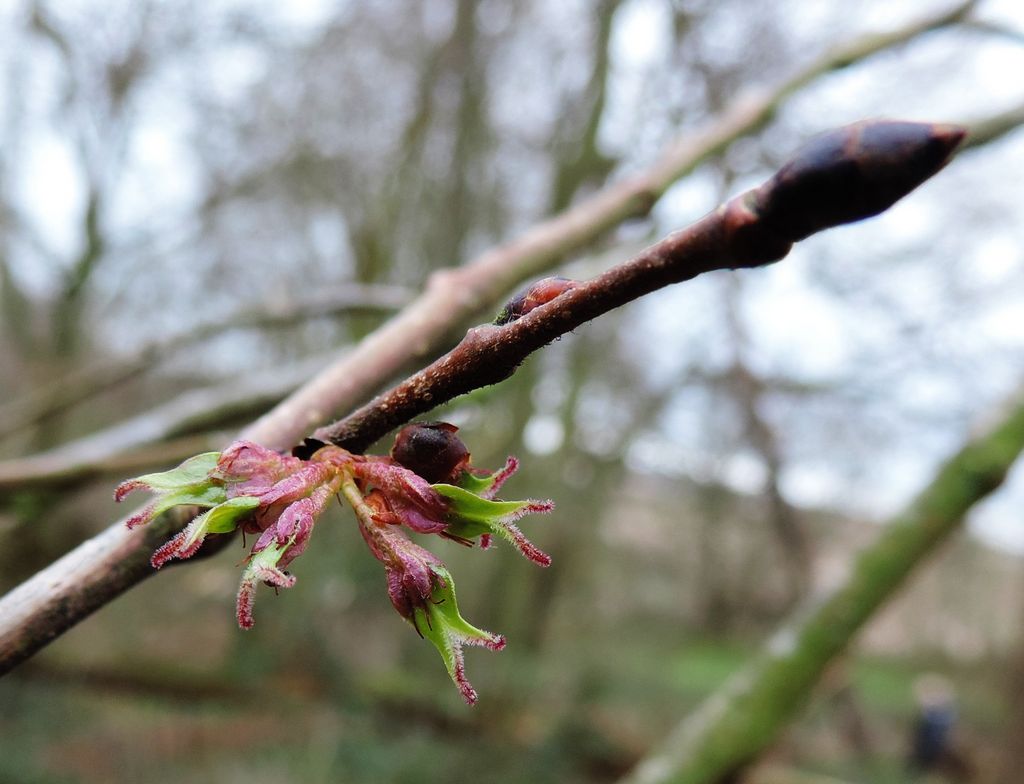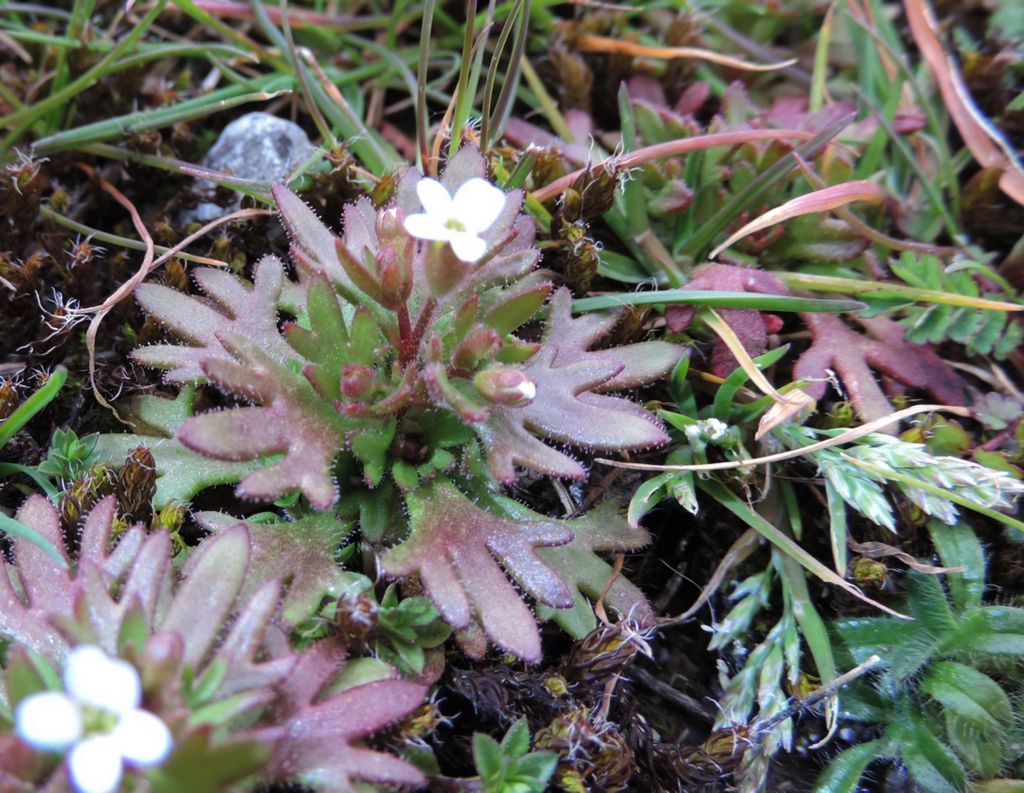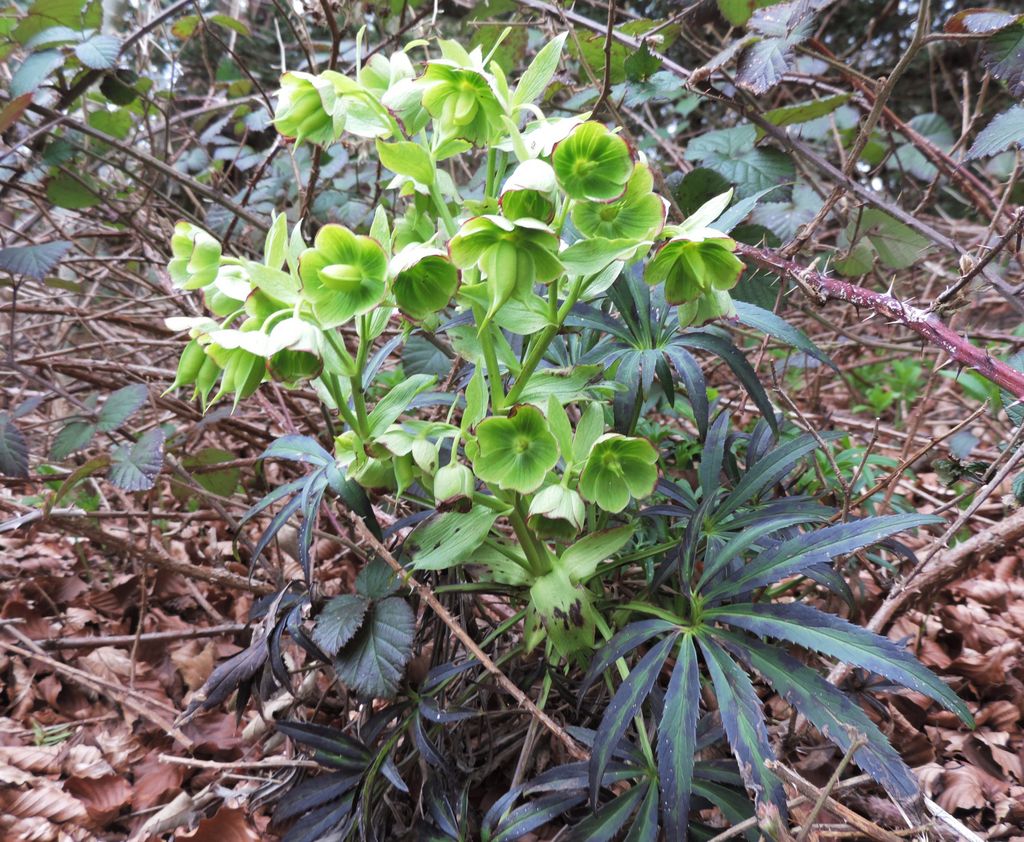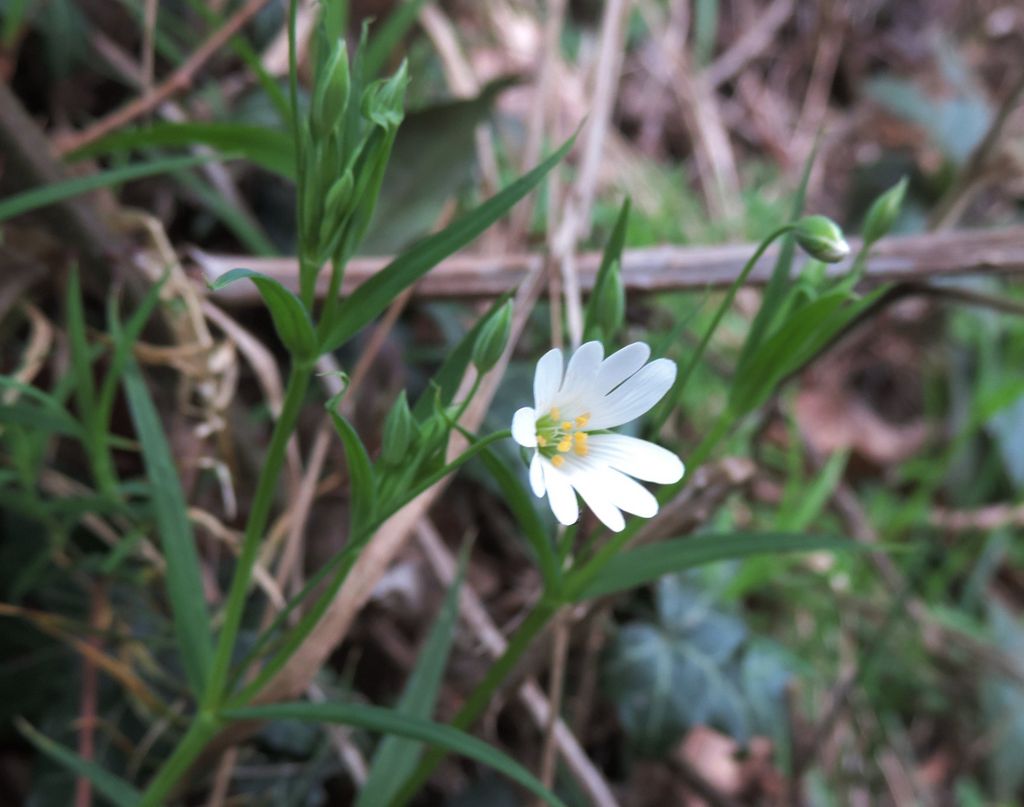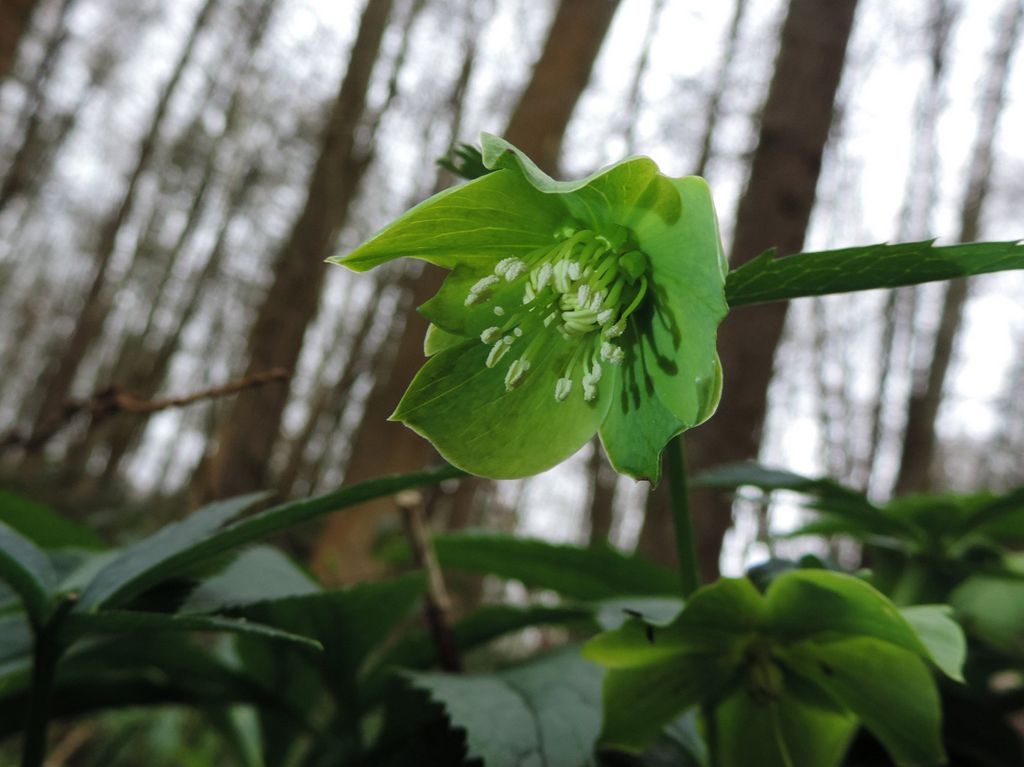Jan and Laurie Haseler organised a very hilly walk on Wednesday 18 March, starting from the National Trust car park at the top of Streatley Hill. On a grey but fairly mild morning, the eleven members who turned out for the walk spread out across the car park in an attempt to maintain social distancing and keep the Covid-19 virus at bay. The walk started out along the track towards the Holies and soon a Woodpecker was heard drumming nearby. Turning westwards up a footpath which leads to Checkendon Wood, the vegetation under-foot changed abruptly from brambles on the Clay-with-flints which over-lies the Chalk bedrock to bare soil on the Westland Green sands and gravels, one of the highest and oldest of the Thames river deposits. The leaves of Three-nerved Sandwort were spotted by the path. A crooked stick was used to pull down a branch on a Wych Elm, so that the flowers and developing seeds could be inspected more closely. The wood was looking very spring-like, with Primroses, Early Dog-violets, sheets of Wood Anemones and even a few Bluebells in flower. The walk continued along the south-facing bank which runs along the boundary between the Clay-with-flints and the Chalk. Barren Strawberry, Hairy Violet and white Sweet Violet were seen here. The route then ran through an area of Gorse and crossed into a grassy field where the hedge line was yellow with Sallow blossom and a Chiffchaff was calling. The path continued through a kissing gate and out onto chalk grassland. The turf was dotted with Hairy Violets and the first Cowslips were just beginning to come into flower. Along the track at the bottom of the valley, tiny white flowers with oval green seed pods were identified as Common Whitlowgrass, while a little further on, equally tiny white flowers with long seed pods were seen on Hairy Bitter-cress. Growing on the path nearby was another plant with small white flowers – Rue-leaved Saxifrage. After leaving the National Trust grassland at the gate at the bottom of the valley, there was a long climb westwards up a sunken trackway, followed by an equally long descent down a quiet lane into the next valley. Skylarks were singing high above and a number of plants of Stinking Hellebore were in flower at the side of the road. The walk continued up the lane on the other side, where a few flowers of Greater Stitchwort were growing on the bank. The route then followed a footpath down through a copse. It was estimated that there were several hundred Green Hellebore plants in the lower part of the wood, with many of them in flower. The footpath continued down to the bottom of valley, after which there was a long steep climb back to the top of the Holies. Some of the group were relieved to discover that the return track back towards the start was mostly on the level. Visibility was good and at one point, the Hannington TV mask on the Hampshire Downs could clearly be seen to the south. A few clumps of Soft Shield-fern were found at the side of the track as it ran through the final stretch of woodland.
Pictures by Rob Stallard

